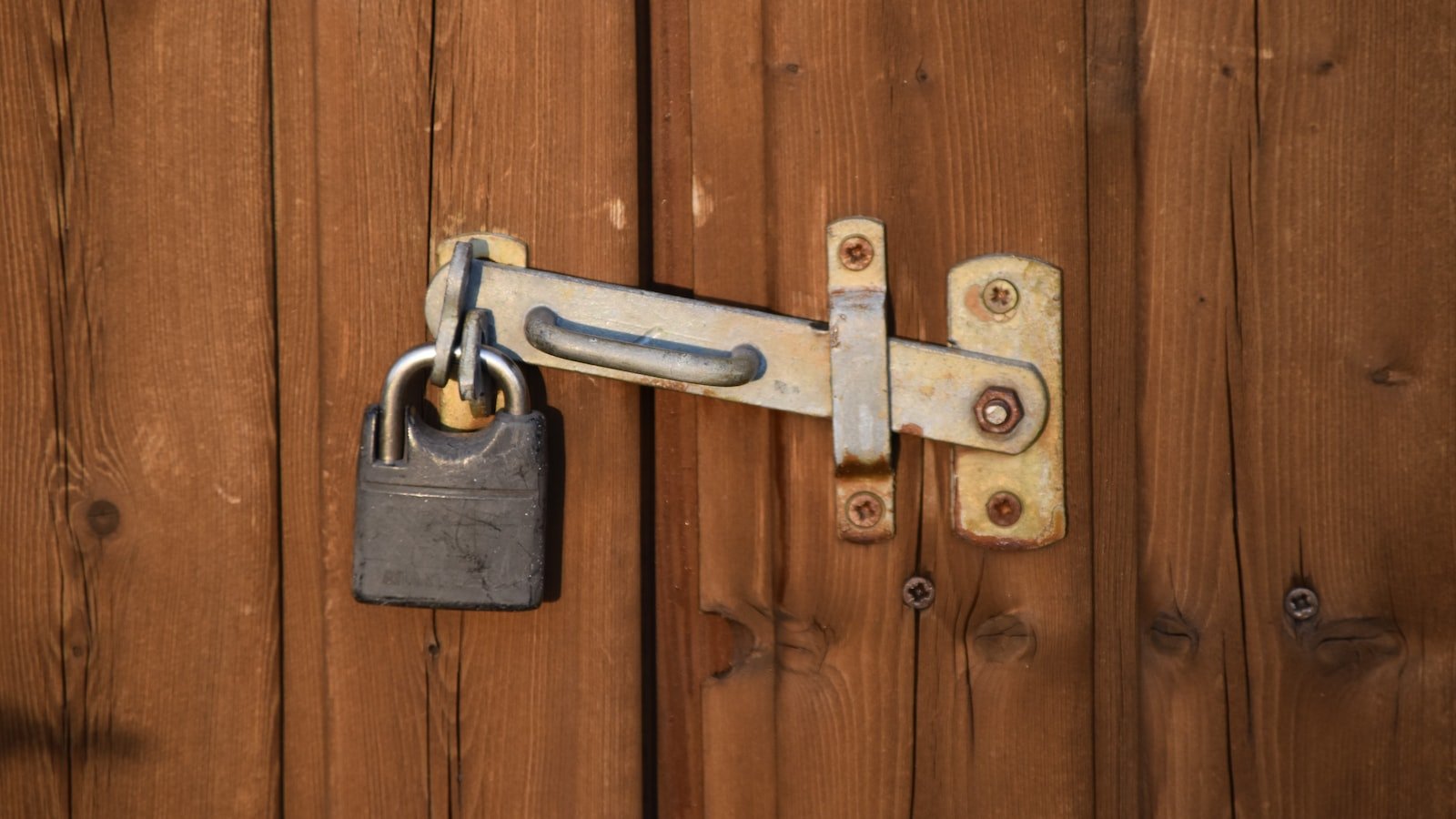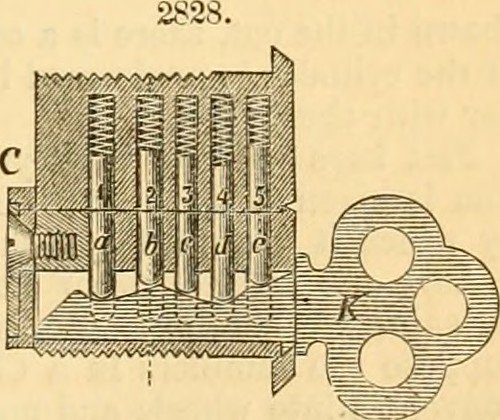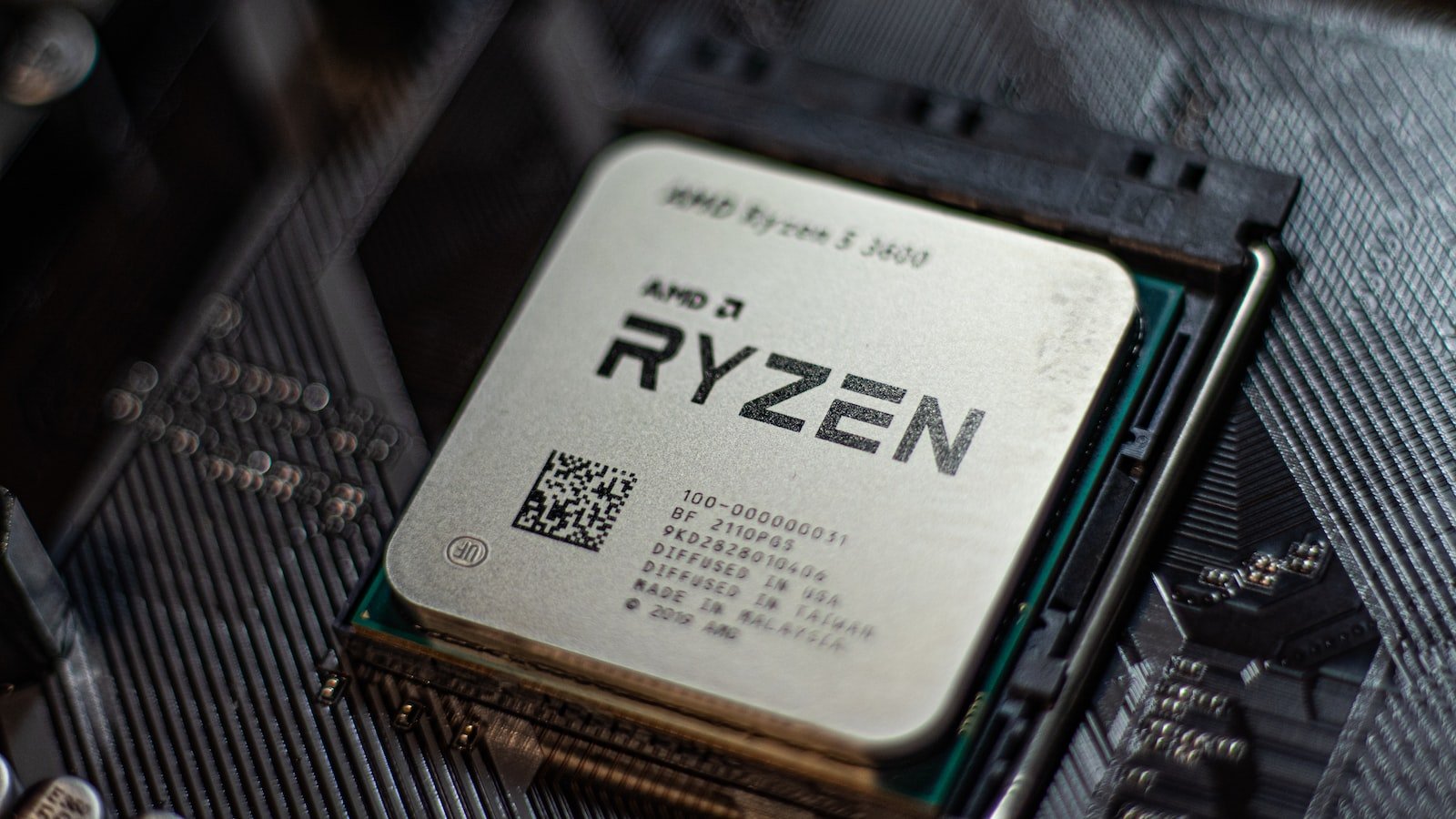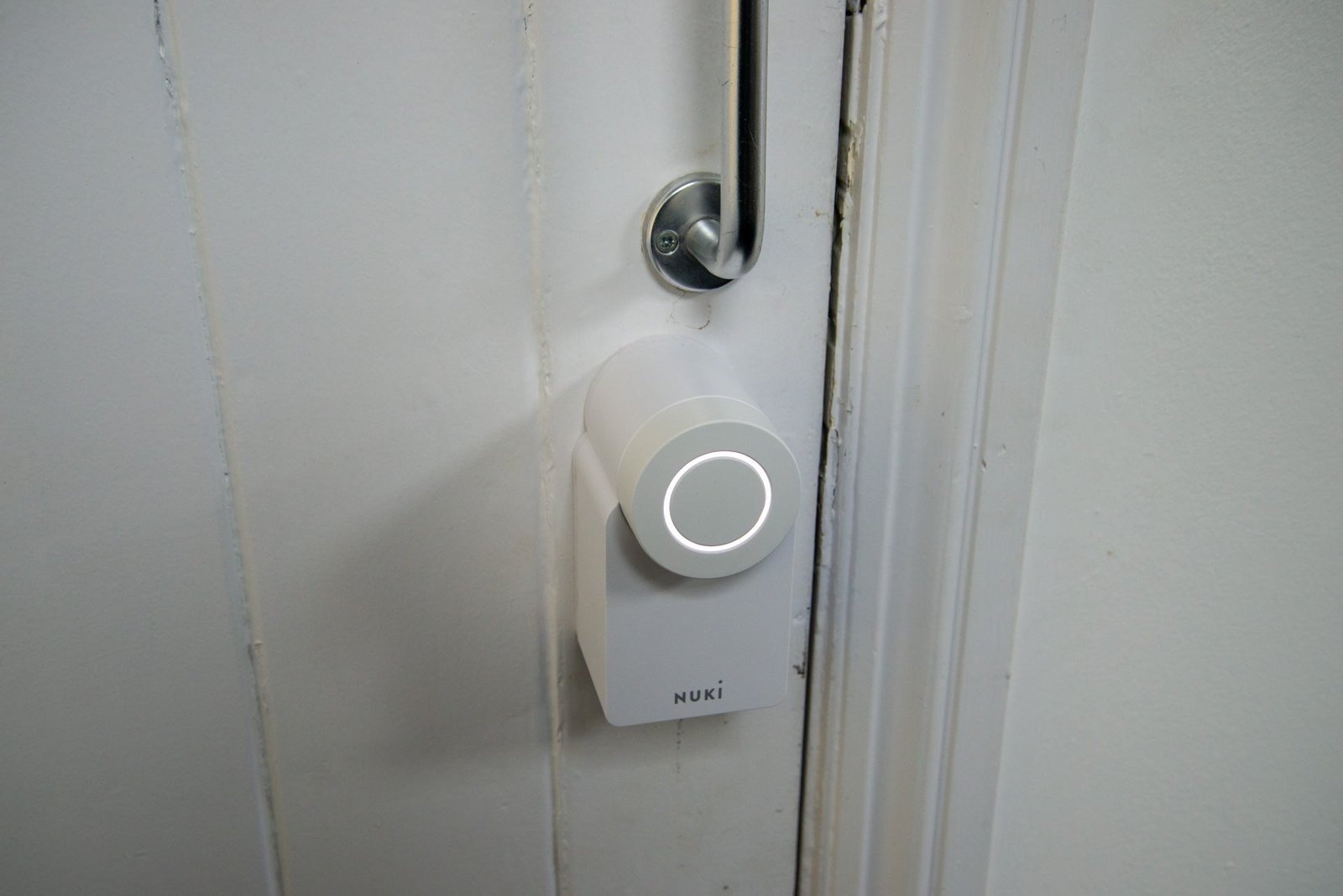Nestled beneath layers of unyielding metal lies the silent guardian that stands between our cherished belongings and the prying eyes of thieves – the lock. As an everyday staple we all too often take for granted, the intricacies of its inner workings often remain shrouded in mystery. Today, we embark on a transformative journey through the labyrinthine maze of a lock’s anatomy, to unravel the enigmatic dance of pins and tumblers that grants access to some and denies all to others. Unlocking the secrets of this timeless security apparatus not only satiates our curiosity but also empowers us with a newfound understanding of the ever-present sentinels that fortify our lives. So, let us venture forward as we delve into the astonishing world of pins and tumblers, peering into the very heart of a lock’s mechanism, and illuminating the path towards a more secure existence.
Table of Contents
- The Anatomy of a Lock: Understanding Pins and Tumblers
- – The Inner Workings: Unveiling the Mechanism of Pins and Tumblers
- – Pin Sizes and Heights: Unlocking the Secrets to a Secure Lock
- – Beyond the Basics: Advanced Lock Technologies and Upgrades
- - Recommendations for Effective Maintenance and Longevity
- - Enhancing Security: Upgrading Locks with High-Security Pins and Tumblers
- Q&A
- Closing Remarks

The Anatomy of a Lock: Understanding Pins and Tumblers
Locks are intricate devices designed to protect our belongings and bring us peace of mind. To truly understand how they work, it is essential to examine the anatomy of a lock, specifically focusing on its pins and tumblers. 🗝️
Pins and tumblers form a fundamental part of the lock’s mechanism, interlocking to create a secure barrier. As you insert the key and turn it, the pins and tumblers inside the lock cylinder respond accordingly. 🗝️
Here’s a breakdown of the key components involved in the functioning of pins and tumblers within a lock:
– Cylindrical Lock: The lock’s body or cylinder houses the pins and tumblers. It acts as a protective shell, shielding the mechanism from external interference.
– Key Pins: These pins are precisely calibrated and vary in length. When the correct key is inserted, the key pins align flush with the shear line between the cylinder and the housing, allowing the lock to rotate.
– Driver Pins: Positioned above the key pins, driver pins rest partially in the cylinder and partially in the housing. These pins apply constant pressure onto the key pins, ensuring the lock remains secure until the right key is inserted.
– Shear Line: This crucial gap separates the cylinder from the housing. When the key aligns the key and driver pins flush with the shear line, the lock can rotate, enabling access.
Understanding the complexity of pins and tumblers within a lock allows us to appreciate their intricate nature and significance in maintaining security. So next time you unlock a door, remember the behind-the-scenes magic happening within the lock’s anatomy! 🚪
– The Inner Workings: Unveiling the Mechanism of Pins and Tumblers
The intricate world of locks and keys holds a fascinating secret: the mechanism known as pins and tumblers. These unsung heroes of security work silently, safeguarding our prized possessions and keeping us at ease. Understanding the inner workings of pins and tumblers can shed light on the remarkable precision and ingenuity behind these unassuming components.
Picture this: a key inserted into a lock. As it turns, the pins inside the lock align with the grooves on the key. But how do they work together to unlock the door? Here’s where the pins and tumblers come into play. Comprising tiny metal pins of different lengths, they are strategically placed within the lock cylinder. As the key rotates, the driver pins are pushed up while the key pins remain stationary. This delicate dance creates a gap between the two pins, known as the sheer line.
To unlock the magic of pins and tumblers, the sheer line is the ultimate secret. The alignment of the sheer line allows the plug within the lock cylinder to rotate freely, allowing the lock to be opened. Each pin and tumbler system is unique, offering various levels of security. From masterpieces of the craft to commonplace locks, the pins and tumblers mechanism remains a steadfast foundation in the world of locks, ensuring safety and peace of mind.

- Pin Sizes and Heights: Unlocking the Secrets to a Secure Lock
When it comes to the security of your locks, understanding pin sizes and heights is crucial. These seemingly insignificant factors can make all the difference in keeping your possessions safe. So, let’s dive into the secrets behind pin sizes and heights that will help unlock a secure lock.
Pin sizes refer to the diameter of the pins used in a lock mechanism. Thicker pins create a more robust barrier against picking and tampering. They offer greater resistance to manipulation, making it harder for intruders to bypass the lock. On the other hand, thinner pins can make a lock more vulnerable, as they are easier to manipulate or overcome.
Similarly, the heights of the pins play a vital role in a lock’s security. Varying pin heights make it difficult for unauthorized individuals to pick the lock using basic tools. When the pins are different lengths, they need to be aligned perfectly to allow the lock to turn, adding an extra layer of security to your lock. This innovative design prevents lock-picking techniques that rely on aligning all the pins at once.
Remember, investing in high-quality locks with carefully selected pin sizes and heights is key to safeguarding your valuables and maintaining peace of mind. So, make sure to consider these factors when choosing or evaluating your locks, as they can significantly impact the security of your property.

– Beyond the Basics: Advanced Lock Technologies and Upgrades
Beyond the Basics: Advanced Lock Technologies and Upgrades
When it comes to protecting your home or business, basic locks might not always cut it. Thankfully, with advancing technology, there are now a plethora of advanced lock technologies and upgrades available that provide enhanced security and convenience. Here are a few innovative options to consider:
1. Biometric Locks:
Say goodbye to traditional keys and hello to cutting-edge biometric locks. These sophisticated locks use fingerprint or iris recognition technology to grant access, ensuring that only authorized individuals can enter. Biometric locks offer unparalleled security while eliminating the hassle of carrying keys or remembering passcodes.
2. Smart Lock Systems:
Transform your home into a smart home with advanced smart lock systems. These locks can be controlled remotely through a smartphone app, enabling you to lock or unlock your doors from anywhere. Some even integrate with virtual assistants, allowing you to unlock your door with a simple voice command. Smart lock systems provide convenience, flexibility, and precise control over access to your property.
3. High-Security Deadbolts:
Reinforce your door’s security with high-security deadbolts. These heavy-duty locks feature reinforced steel bolts, anti-drill plates, and pick-resistant keys. They are designed to withstand tampering attempts and provide added protection against forced entry. Installing high-security deadbolts is an excellent upgrade that significantly enhances your overall security level.
With these advanced lock technologies and upgrades, you can take your security to the next level. Whether you opt for biometric locks, smart lock systems, or high-security deadbolts, investing in these advancements will bring you peace of mind, knowing that your property is securely protected.
– Recommendations for Effective Maintenance and Longevity
Recommendations for Effective Maintenance and Longevity
Regular maintenance is crucial for ensuring the longevity of any product or system. Here are some recommendations to help you effectively maintain and extend the lifespan of your equipment:
1. **Follow manufacturer’s guidelines**: Always refer to the manufacturer’s instructions and guidelines for maintenance procedures. These instructions are tailored to your specific product and provide the best practices for keeping it in optimal condition.
2. **Establish a maintenance schedule**: Create a regular maintenance schedule based on the manufacturer’s recommendations. This can include monthly, quarterly, or annual check-ups, depending on the nature of the equipment. Stick to the schedule and record all maintenance activities to stay organized and track any issues that may arise.
3. **Perform routine inspections**: Conduct routine inspections of the equipment to detect any signs of wear or damage. This can include checking for loose connections, leaks, or unusual noises. Regular inspections allow for proactive measures to be taken, minimizing the risk of major breakdowns and costly repairs.
4. **Stay on top of cleaning and lubrication**: Dust, dirt, and debris can accumulate over time and negatively impact the performance of your equipment. Regularly clean and remove any obstructions to maintain optimal functionality. Additionally, pay attention to lubrication requirements as specified by the manufacturer to reduce friction and ensure smooth operation.
5. **Train your staff**: Properly train your staff on how to handle and maintain the equipment. This includes understanding safety protocols, correct operation procedures, and basic troubleshooting techniques. Well-trained staff can detect potential issues early on, ensuring prompt action and reducing the risk of further damage.
Remember, proactive maintenance is key to increasing the lifespan of your equipment while minimizing downtime and repair costs. By following these recommendations and staying diligent with upkeep, you can maximize the effectiveness and longevity of your investments.
– Enhancing Security: Upgrading Locks with High-Security Pins and Tumblers
Locks play a crucial role in keeping our homes and businesses secure. As technology advances, so do the techniques used by criminals to break into our properties. In order to stay one step ahead, it is essential to upgrade locks with high-security pins and tumblers.
High-security pins and tumblers offer an enhanced level of protection against lock picking, bumping, and other manipulation techniques used by intruders. These advanced mechanisms are designed to make it extremely difficult for unauthorized individuals to access your property.
Benefits of upgrading locks with high-security pins and tumblers include:
– Increased resistance to picking: High-security pins and tumblers require specialized tools and skills to manipulate, making them highly resistant to lock picking attempts.
– Protection against bumping: Bumping is a popular method used by burglars, but high-security pins and tumblers minimize the risk of this technique being effective.
– Enhanced key control: High-security locks often come with patented key systems, which means duplicate keys can only be obtained by authorized individuals, reducing the risk of unauthorized key copies.
Investing in the upgrade of locks with high-security pins and tumblers is a proactive way to safeguard your property and belongings. By choosing this advanced technology, you gain peace of mind knowing that your security measures are on par with the latest advancements in the industry. Don’t compromise on the safety of your property; take the necessary steps to stay ahead of potential threats.
Q&A
Q: What exactly are pins and tumblers in a lock?
A: Pins and tumblers are key components of a lock’s mechanism. Pins are made up of two parts, the driver pin and the key pin, which fit inside the lock cylinder. Tumblers are small metal discs that are stacked above the pins and are controlled by the key’s grooves.
Q: How do pins and tumblers work together to secure a lock?
A: When a key is inserted into the lock, its grooves align the pins and tumblers at their correct positions, creating a straight path for the lock cylinder to turn. If the pins and tumblers are not in the correct positions, the lock will remain secure and unable to turn.
Q: Are all pins and tumblers the same size in every lock?
A: No, pins and tumblers vary in size and length, which contributes to the security of a lock. Higher security locks often have pins and tumblers with differing sizes, making it more difficult for a potential intruder to pick the lock successfully.
Q: Can a lock be opened without the correct key by manipulating the pins and tumblers?
A: Yes, a technique called lock picking allows skilled individuals to manipulate the pins and tumblers using tools that mimic the functions of a key. This technique requires significant skill and knowledge of a lock’s internal workings.
Q: Are pins and tumblers the only factors that determine a lock’s security?
A: No, while pins and tumblers are important, other factors such as the type of lock mechanism, quality of materials used, and additional security features also contribute to a lock’s overall security level.
Q: How long have pins and tumblers been used in locks?
A: This lock mechanism design dates back thousands of years. Ancient Egyptians were believed to use a similar pin and tumbler system as early as 4000 BC. Over time, locks have evolved and advanced, but the concept remains fundamentally the same.
Q: Can a lock with pins and tumblers be replaced with a more advanced lock mechanism?
A: Absolutely. While pin and tumbler locks are widely used, there are various advanced lock mechanisms such as electronic, biometric, or combination locks that offer enhanced security and convenience. The choice depends on the specific needs and preferences.
Closing Remarks
As we conclude our journey into the fascinating world of locks and their intricate mechanisms, we have come to appreciate the true beauty hidden within. From the humble beginnings of locks as rudimentary wooden contraptions to the sophisticated and complex wonders that grace our doors today, the evolution of this age-old invention is nothing short of awe-inspiring.
We have delved deep into the anatomy of a lock, shedding light on its inner workings and demystifying the enigmatic realm of pins and tumblers. While seemingly ordinary, these small metal components possess an extraordinary power, keeping our belongings safe and ensuring our privacy.
But beyond the mechanics and craftsmanship lies something intangible yet equally significant—a concept called trust. As we entrust our security into the hands of a lock, we are reminded that trust forms the foundation of any successful relationship. It is a delicate dance between two entities, where the lock patiently waits for the right key to unlock its secrets.
Indeed, the anatomy of a lock serves as a metaphor for the intricate tapestry of life. Just as the pins and tumblers work in harmony to guard our possessions, we too must find the delicate balance between vulnerability and security, between sharing and protecting. Like the key that effortlessly aligns the pins, we must navigate the complexities of trust, understanding, and communication to unlock the doors that stand before us.
So, the next time you stand face to face with your trusty lock, take a moment to appreciate its elegance and the grandeur of its simplicity. Reflect on the hidden world of pins and tumblers that silently dedicate their existence to safeguarding what matters most. And may this understanding give you an unshakeable appreciation for the beauty and complexity that often lies beneath the surface of life’s simplest creations.
The anatomy of a lock holds secrets beyond its tangible features—an untold story of trust, resilience, and the delicate dance between security and vulnerability. Let us cherish this often-overlooked marvel of human ingenuity, for it is a testament to our unyielding quest for both protection and freedom.
As an affiliate, my content may feature links to products I personally use and recommend. By taking action, like subscribing or making a purchase, you’ll be supporting my work and fueling my taco cravings at the same time. Win-win, right?
Want to read more? Check out our Affiliate Disclosure page.